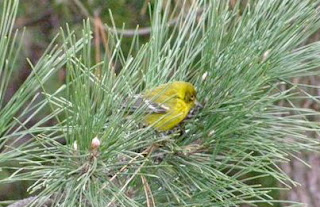 |
Glenolden CBC Area 3 |
Glenolden CBC area #3 extends along the Delaware River from
the Philadelphia Airport south to Marcus Hook. The area extends west from the riverfront only a few miles
and the eastern boundary actually lies in Gloucester Co., NJ. There has been a long-standing
agreement with the NW Gloucester Co., NJ CBC that we can count all birds seen
on the New Jersey riverfront. My
guess is that 85-90% of the count area is comprised of some type of industry
including a major international airport, a busy east coast shipping lane, a
large power plant, two refineries, a main interstate highway that connects
Maine to Florida, two railroad lines and a soccer stadium. What is not
industry, is made up of clustered row homes, abandon homes, two cemeteries and
a three block long junkyard full of cars and car parts. Oh, did I mention that there is also a
Super Fund site within the count area?
To make birding a bit more challenging, this 85-90% is private property or
posted as off limits for national security reasons. The area is readily equipped with
remote cameras, roving security guards, police and probably water-boarding if
we would make a false move. Despite
these obstacles, this area has turned out several outstanding species in prior
counts including Common Loon, Long-tailed Duck, Surf Scoter, American Woodcock,
Wild Turkey, Blue-gray Gnatcatcher, Orange-crowned, Pine and Nashville Warblers
and Common Redpoll. This area
produces first-class species because the 10-15% of non-industrial space contains
a large river with several good access points and a small but productive public
park.
The following are several of the better birding areas
travelling north to south. The south end of the Philadelphia International Airport
can be viewed from the UPS employee lot.
Scanning the open areas of the airport can sometimes produce Northern
Harrier, American Kestrel and if luck has it, a feeding flock of Snow Buntings.
Stopping along the road that borders the airport property is prohibited but a
slow drive with the windows down will help you pick up sparrows and other
songbirds. A brief look towards
Tinicum Island, especially at low tide, might produce a few Wild Turkeys
foraging on the beach and Bonaparte’s Gull is always a possibility. Police
frequently patrol this road and while some officers might be a little liberal
in their interpretation of the no-stopping rule, I have found the majority will
ask you to move on.
Governor Printz Park near the intersection of Wannamaker Ave.
and 2nd Street in Essington is a good place to scan the river and the
south end of Tinicum Island.
Moving
further south to Chester, one of the best river access points is Fisherman’s
Park and the adjacent bike trail at PPL Park (soccer stadium) at the end of Flower St.
 |
| PPL Park. Home of the Philadelphia Union soccer team. |
From here, you
can view a wide portion of the river both north and south. Gulls abound, mostly
Ring-billed, but there is always a scattering of Herring and Great
Black-backed. Lesser Black-backed
has also been seen here.
For the CBC there are three target species here,
Tundra Swan, Great Cormorant and Peregrine Falcon. The swans are usually loafing on the New Jersey shoreline
and to count them well a scope is needed. There are usually several
Double-crested Cormorants moving along the river and they should all be
examined for Great Cormorant that winters here in small numbers.
 |
| Double-crested Cormorants are frequently seen flying along the river or resting on pilings. |
Peregrines frequent the Commodore Barry
Bridge and occasionally will make a foray for one of the several pigeons that
call many of the nearby abandoned buildings home. Walking along the bike path here can produce songbirds (mostly sparrows and goldfinches) but the area looks like it has the potential to
hold a western stray or lingering catbird or thrasher.
 |
| View of the Commodore Barry Bridge from Fisherman's Park. This is a good spot to watch for Peregrines. |
 |
| The area behind PPL Park is a good location to search the river and walking the bike path south to the nearby office complex can be productive for songbirds. |
 |
| Northern Mockingbird along PPL bikepath. |
Veteran’s or Municipal Park (both names
are used) at the base of Market St. in Marcus Hook is another area to search
the river for goodies. The park also contains a small section of pine trees
where we once found a Pine Warbler and this year two Red-breasted Nuthatches.
 |
| Veteran's Park at the foot of Market St. in Marcus Hook a great place for observing the river. |
 |
| Two views from Fisherman's Park shortly after dawn |
 |
There is a small colony of House Sparrows located in the park and sometimes other species have joined them such as this Pine Warbler (below) in 2009.
|
 |
| Ring-billed Gulls are common anywhere along the river. |
The key to finding high-quality birds along the river is patience. A birder has to spend several hours
standing, scoping and scanning to be rewarded with an exclusive gull or
waterfowl species. This can quickly
get wearisome in harsh weather or after you have sucked up your yearly quota of
refinery emissions.
 |
| Ring-billed Gulls - 2nd winter (left) and 1st winter (right). |
Area #3 also contains the small Henry Johnson Park, which is comprised of deciduous trees, a creek and large areas of edge habitat and a power-line cut . Since there is very little similar habitat nearby, this park can be very birdy at times. It is a good place to pick-up songbirds and there is usually at least one Sharp-shinned or Cooper’s Hawk present.



































.jpg)
.jpg)
.jpg)